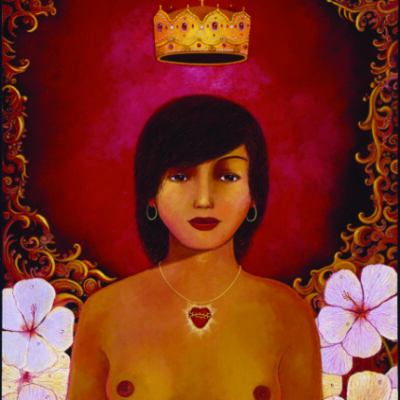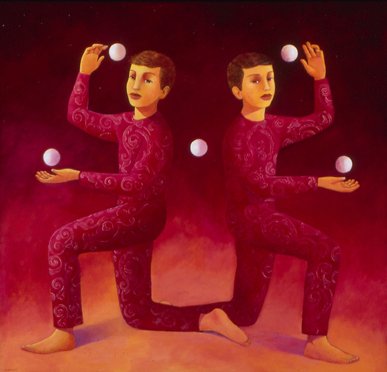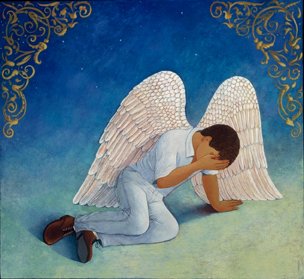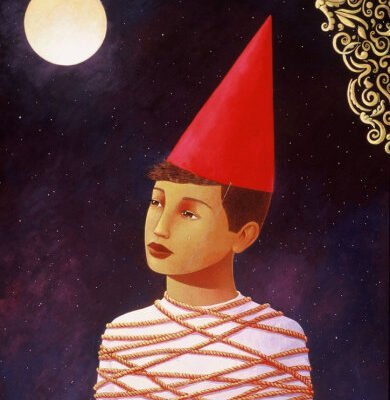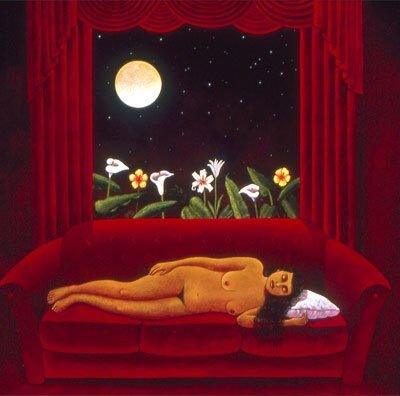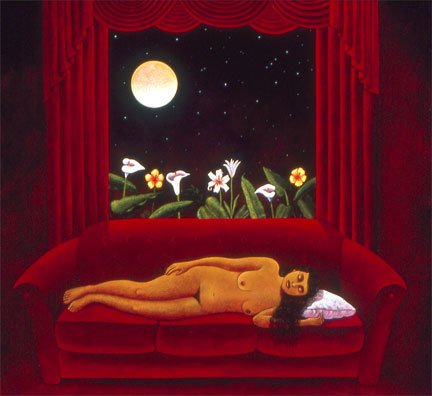
Liliana Wilson
Liliana Wilson creates richly colored paintings with images often drawn from the subconscious. Born and raised in Chile in a time of social and political upheaval, Wilson creates enigmatic figures whose outward composure is frequently in direct contrast with their inner turmoil.
The Art of Liliana Wilson:
Mapping Absence and Silence. A Cartography of revelation
The art of Liliana Wilson is intentionally deceiving. The first thing that attracts the gaze of the viewer is the beauty of the images in her work. Controlled, precise, with great attention to detail, the artist brings to life beautiful creatures. The characters in Wilson’s oeuvre gaze directly to the viewer, as if demanding the return of their gaze with the expectation of an interaction. They seem to be waiting for an answer to a question that seems to linger.
The figures that inhabit the visual world of Liliana Wilson captivate with a quiet and reserved demeanor. For a moment, they seem to suggest that they are here, and then they are gone. They are looking at you but they look through you and when you think you have finally captured them, they have already escape from you. Gloria Anzaldúa states “las pinturas de Liliana son ensueños que se quieren hacer realidad.”[1] I suggest that in the dream quality of her work there is a hidden, profound narrative of ausencias y silencios.
At an early age, she was confronted with difficult experiences. The absence and conflict of important figures in her life marked her childhood. Wilson discovered drawing when she was eight years old, and few years later she realized that “el arte te hacía una persona diferente.”[2] She left Chile in 1977, four years after the military coup. Once in the United States she found solace in drawing. In 1978 she began the process of translating her drawings to the medium of painting. Her childhood experiences and the devastating memories of the military coup came with her to the United States. One of her early paintings “Los Desaparecidos en el Cielo,” (1978) depicts the bodies of two men that seem to be sleeping on a beach. Then the viewer is confronted with the realization that this beautiful painting hides, veils the horror and violence that took place in Chile after the fall of the government of Salvador Allende.
The landscapes present in her early work disappeared for a while, as her memories of the Chilean landscape became remote. In recent paintings, timid suggestions of new landscapes begin to appear, although remote and unreachable. In “La Bella Durmiente” (2003) the remote quality of the landscape is apparent. The red velvet curtains frame the landscape, and the nude woman in the sofa. This treatment seems to suggest a painting within the painting, forcing the landscape to become distant to the scene. The full moon and white flowers are the silent and remote witnesses of the vulnerability of the naked female body.
In her oeuvre, the gesture of the brush disappears in the canvas, and the intangible trace of the finished penciled sketch reclaims its presence on the painting. The act of drawing for Liliana Wilson is an incessant exercise, by which she reclaims her childhood memories, while the act of painting is for the artist an exercise of veiling her presence. The need to turn the hand holding the brush invisible seems to articulate her migrant experience. In describing the experience of migrating she states, “the only power you have as a immigrant is to be invisible.”
The visual world of Liliana is inhabited by solitary young figures in which the definitions of gender and sexuality are left to the viewer. The sexual ambiguity of the characters, their youth and innocence challenges the viewer to construct what the artist has deconstructed. Las ausencias are present in their gaze and silence is written in the absent walls of her intimate spaces. Her art is beautiful and in its beauty, disturbing.
Beauty in her paintings is the strategy used by the artist to veal and reveal. She is asking us to see beauty in order to transcend, to go beyond, to a place where silence, the hidden, the absent are needed for the moment of revelation. In all of Liliana’s work, beauty continues to be the means by which the artist captures the attention of the viewer, it is an invitation to enter a disturbing map of absences and silences as a condition for finding her cartography of revelation.
[1] Gloria Anzaldúa, “Bearing Witness: Their Eyes Anticipate the Healing.” In Bear Witness to the Experience of Nuestra Gente, Esperanza Peace and Justice Center, San Antonio, July 20, 2002-September 13, 2002, p. 4